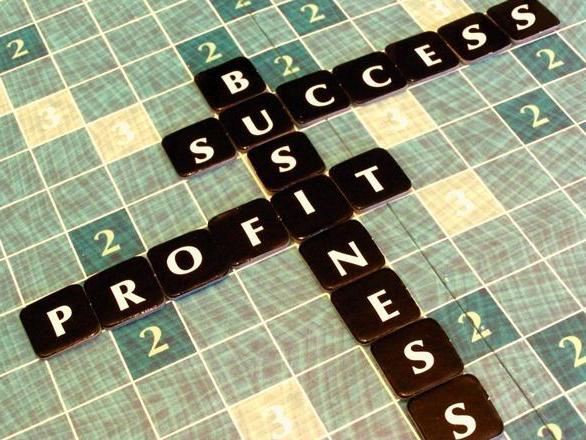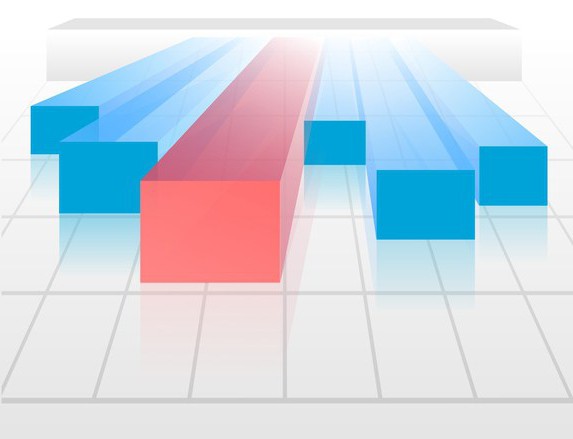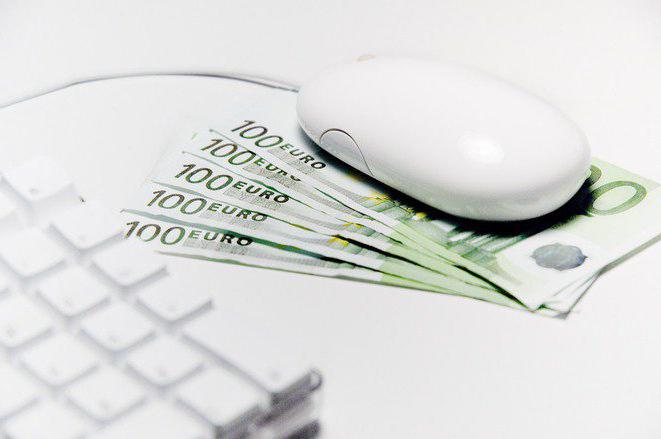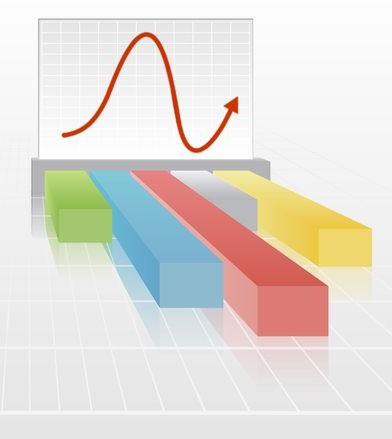The effectiveness of the organization reflects the final result of the use of resources for a certain period of time. It is characterized by increased productivity, quality of capacities and materials. Absolute and relative indicators. The former include profit and other cost variables. The second is cost-effectiveness. For the purpose of analysis, the calculated data are compared with planned or with indicators for previous periods.
Essence
Profitability is a general indicator that characterizes the organization’s activities by the ratio of costs and profits. The final result is influenced by internal (organizational) and market conditions. The first group includes the dynamics of productivity, technical characteristics of the equipment, the method of organizing work, etc. External factors include the price of resources that the enterprise uses to manufacture products, and the cost of the finished product.

The increase in profitability is accompanied by the acceleration of trade, cost reduction, increase in selling prices. Western economists believe that capital intensity, product quality, the company's share in the segment and other indicators are also of considerable importance.
Return on assets
The efficiency indicator of the use of sources of financing reflects how much money from profit has been invested in buildings, equipment, finished products:
R ak = (Net profit (PE) / Average annual value of all assets) x 100%.
Separately, the operating efficiency of production assets and current assets is calculated.
Return on assets = PE x 100% / Weighted average cost of fixed assets.
P about = PE x 100% / Weighted average cost of OA.
Consider an example of analysis of indicators.
| Data | Plan | Fact | Deviation |
| 1. Net profit | 1860 | 1980 | +120 |
| 2. The average cost of the OS | 15090 | 15590 | +500 |
| 3. The average cost of intangible assets | - | 110 | +110 |
| 4. The average cost of OA | 5530 | 5920 | +390 |
| 5. Total assets (2 + 3 + 4) | 20620 | 21620 | +1000 |
| Profitability = (1) / (5) | 9,02 | 9,16 | +0,14 |
Cost-effectiveness ratio increased by 0.14 points. After conducting a factor analysis, we can conclude that the following influenced the growth:
- profit increase: 120/21620 x 100% = + 0.56 points;
- change in asset value: + 0.56 - (+0.14) = -0.42 points.
That is, asset utilization efficiency has increased due to profit growth.

Capital efficiency
Return on investment shows the quality of use of funds invested in the organization. It is calculated by the formula:
P and = Profit before tax / (Balance sheet - Short-term liabilities) x 100%.
Return on equity (SC) shows how much profit falls on the unit of capital of the organization:
P ck = PE / CK x 100%.
It makes sense for an enterprise to receive loans if capital efficiency increases after additional funds are invested. Lenders and owners of the organization expect future income from invested funds. From the perspective of the former, the rate of return on borrowed funds is expressed by the following formula:
R zk = Interest on loans / (Long-term + Short-term loans) x 100%.
Shareholders calculate their profitability differently:
R zk = PE / Borrowed capital x 100%.
The efficiency of using the total amount of capital is calculated by the formula:
P cap = (Cost of borrowing + PE) / Currency (total) balance x 100%.
Changes
Cost-effectiveness of the enterprise can be analyzed by comparing the indicators of efficiency of use of assets and capital.The return on equity increases if the share of receivables increases. The difference between these two indicators forms the effect of financial leverage. If profits increase through the use of loans, then the return on assets, net of interest on loans, is greater than zero. In such cases, they say that the profitability of the loan covers the costs of its use.
Shoulder financial leverage - this is the proportion of borrowed funds in the total amount of liabilities. The structure of formation of the organization’s cash sources is considered optimal if there is a maximum increase in the profitability of the insurance company with an acceptable level of risk.
The composition of revenue and the cost of production also affect the dynamics of profitability. If the volume of sales is growing, and the product range is dominated by profitable products, then efficiency will increase. Internal factors also include product quality, the rhythm of shipments and production, and the speed of paperwork. The company can affect these indicators independently. But the cost of raw materials, compliance with the terms of contracts, the prevailing forms of settlements, additional costs that may arise due to non-compliance with the conditions of supply, the organization can not control.

A qualitative analysis of profitability estimates involves tracking:
- the dynamics of the ratio of cost to revenue;
- sources of net profit formation;
- structures of administrative, commercial, operating and other costs;
- conducting a factor analysis of the formation of each indicator (rapid growth in profitability of sales can be formed both due to a large margin and as a result of optimizing the cost structure).
Return on sales
Profit rate = Sales income / Gross profit x 100%.
Return on sales shows the share of income in revenue. If the indicator decreases in dynamics, then this indicates a low competitiveness of products, a reduction in demand. With a constant sales structure, sales profitability depends on prices and the cost level. A qualitative increase in profitability is achieved by increasing the first indicator against the background of a decrease in the second. To do this, the organization must focus on market conditions, systematically regulate prices, control production costs, review and update the assortment.

Cost-effectiveness indicators
Profitability from activities can be calculated by the formula:
Profitability of sales = state of emergency / Cost of sales x 100%.
The same indicator can be calculated differently:
P prod = Gross profit / Cost x 100%.
In the numerator you can put the income from the sale. Then the formula will reflect the level of profit of the enterprise from one ruble spent on manufacturing products. This indicator can be calculated as a whole organization, and for individual units, types of goods. In the second case, the following formula is used:
P ol = (Price - Cost) / cost x 100%.
The dynamics of the indicator depends on:
- The structure of products sold. The increase in the share of profitable goods contributes to increased profitability.
- The increase in cost inversely affects production efficiency.
- Rising prices also increase profitability.
Another important indicator is operating cost-effectiveness. Formula:
R op = Operating income / Operating expenses x 100%.
It shows how much profit falls on 1 ruble of expenses.

Profitability of the main activity reflects the efficiency of not only manufacturing processes, but also marketing of products.
Profitability of expenses = Profit from sales / Total costs x 100%.
The numerator takes into account the cost of goods sold, commercial and administrative expenses.
The following indicator gives an overall picture of the effectiveness of the use of funds:
Profitability = Total costs / Volume of products sold x 100%.
Example
The revenue for 2014 amounted to 3397.3 thousand rubles, production cost - 2609.4 thousand rubles. Gross profit from sales - 787.9 thousand rubles. It is necessary to determine the level of cost-effectiveness of costs for the current and future period, if it is known that in 2015 the increase in prices for products will be 26%, and for materials - 37%.
We calculate the level of profitability for the current year: (787.9 / 2609.4) x 100 = 30.2%.
Rising prices will affect the cost: 1.26 / 1.37 = 0.92.
Define the planned level of profitability: 0.302 - 1.302 x (1 - 0.92) = 19.7%.
Profitability threshold
As shown above, performance can be calculated using several indicators. The numerator of formulas is gross, operating, net profit and even income from sales. The “middle ground” displays the breakeven point, or profitability of fixed costs. She calculates the maximum level of business activity at which the company does not receive income, but also does not suffer losses:
Pr = fixed costs / gross margin ratiowhere:
Sqm = (Revenue - Gross profit) / Revenue.
The company suffers losses if the sales volume is below the marginal level of profitability, and vice versa. With the growth of sales volumes fixed costs per unit of product are reduced, and the variables do not change. The threshold of profitability can be calculated for the entire range and for individual types of products.

Production
Organizations involved in the manufacture of products calculate the profitability of the main activity:
Return on production costs = (Revenue - Total cost) / Total cost x 100%.
This formula takes into account all the costs of the enterprise: the purchase of materials, semi-finished products, the payment of wages to workers, rent, utilities, advertising costs, etc. In production, raw materials and materials affect the cost most. The production cost-effectiveness, the calculation formula of which is presented above, shows how much profit one ruble invested in the cost will bring.
Example
| Indicator | Organization 1 | Organization 2 |
| Revenue (million rubles) | 1,5 | 2,4 |
| Total cost (mln rubles) | 0,5 | 1,2 |
Find the profit from the sale, as the difference between revenue and cost:
1) 1.5 - 0.5 = 1 (million rubles);
2) 2.4 - 1.2 = 1.2 (million rubles).
In absolute terms, the indicators of the second enterprise are higher. But this does not mean that it works more efficiently. Calculate the profitability of organizations:
1) P 1 = 1 / 0.5 x 100% = 200%;
2) P 2 = 1.2 / 1.2 x 100% = 100%.
Obviously, the production cost-effectiveness of the first enterprise is higher, that is, the organization works 2 times more efficiently.
Conclusion
Profitability is the ratio of profit to the cost of the organization. It more accurately shows the state of affairs at the enterprise, allows you to quickly respond to changes in the situation. Profitability can be calculated as a whole for the company, and for individual branches or types of products. Changes in indicators should be monitored not only in absolute terms, but also using factor analysis. The breakeven point is calculated based on the profitability threshold.









